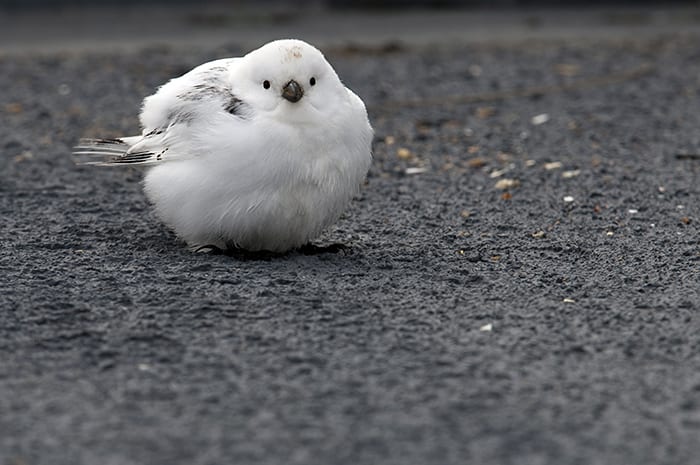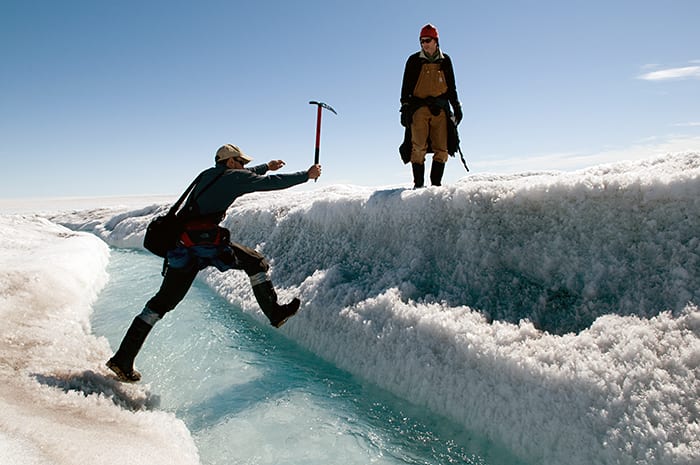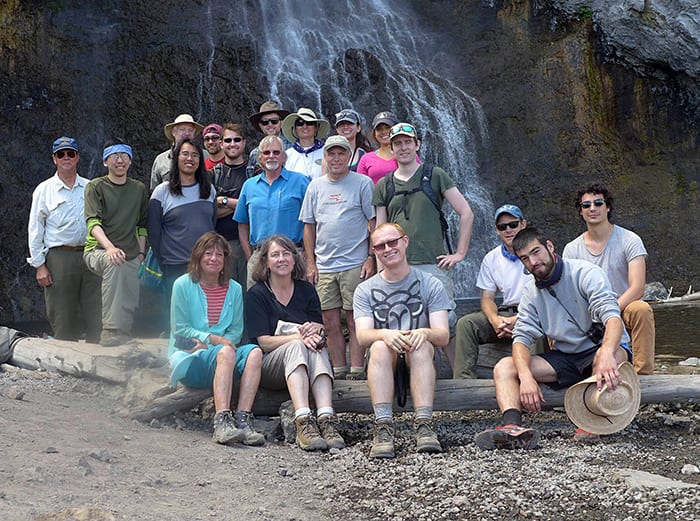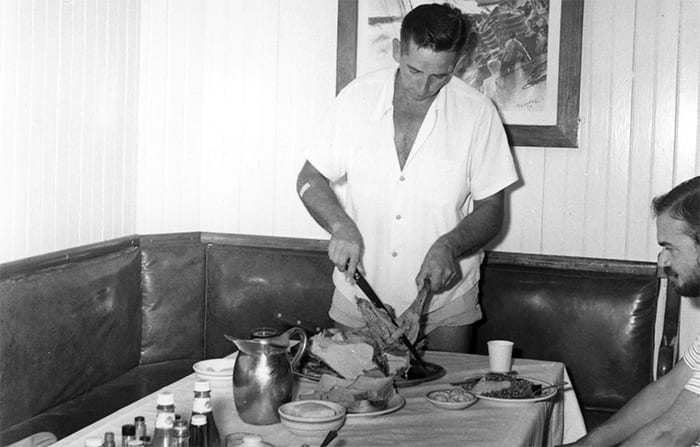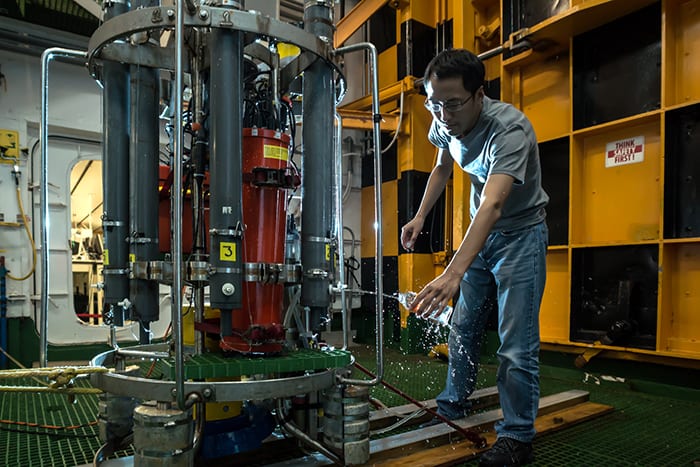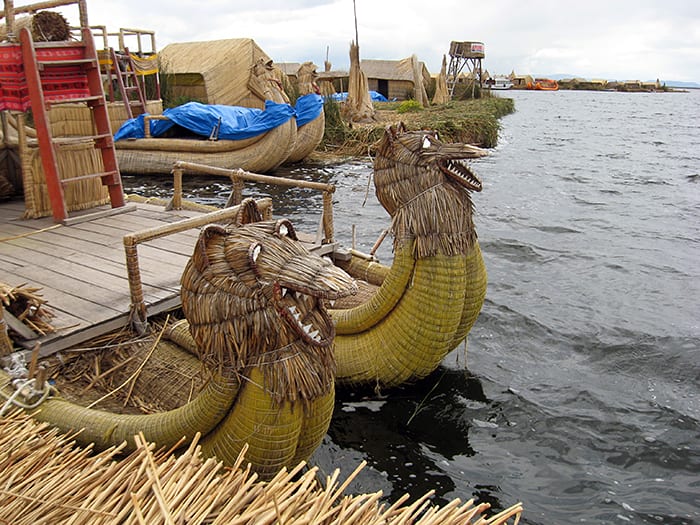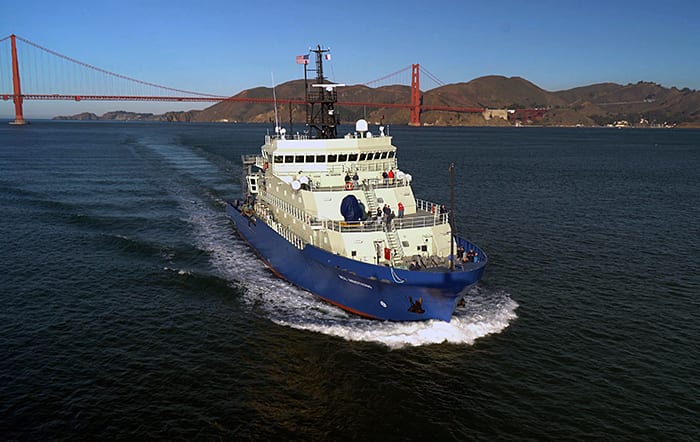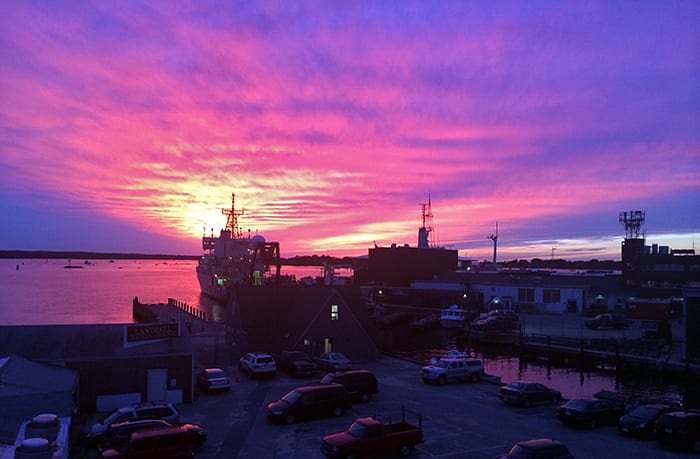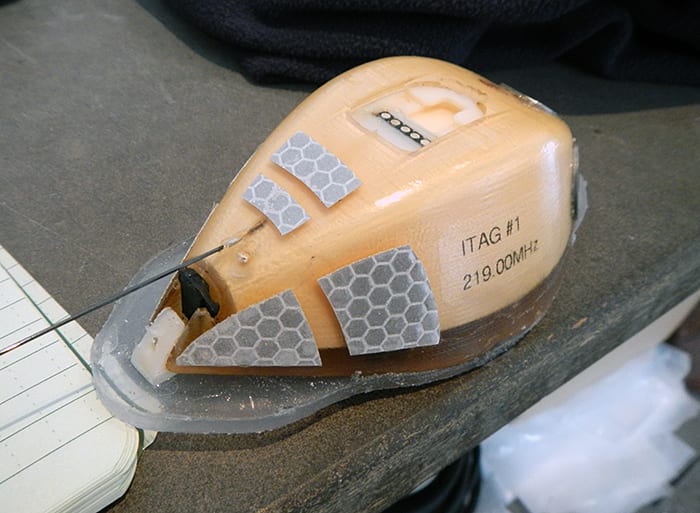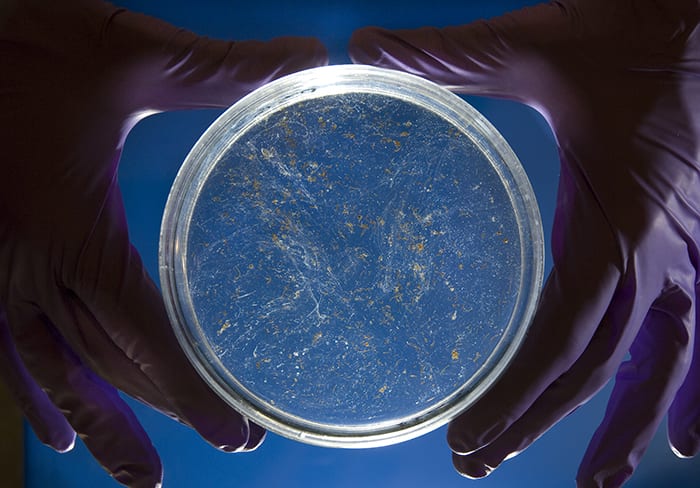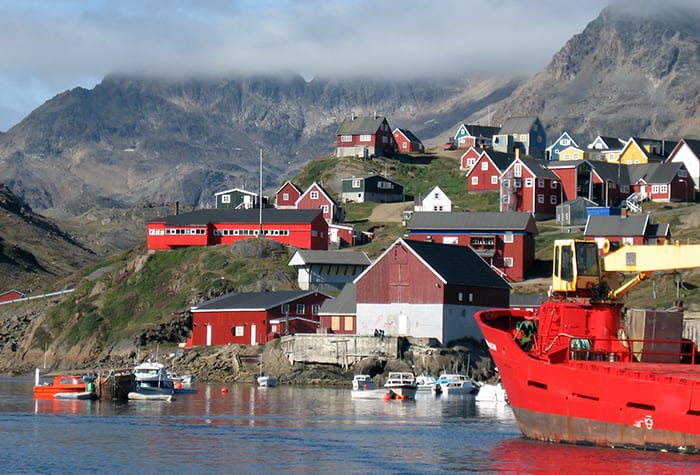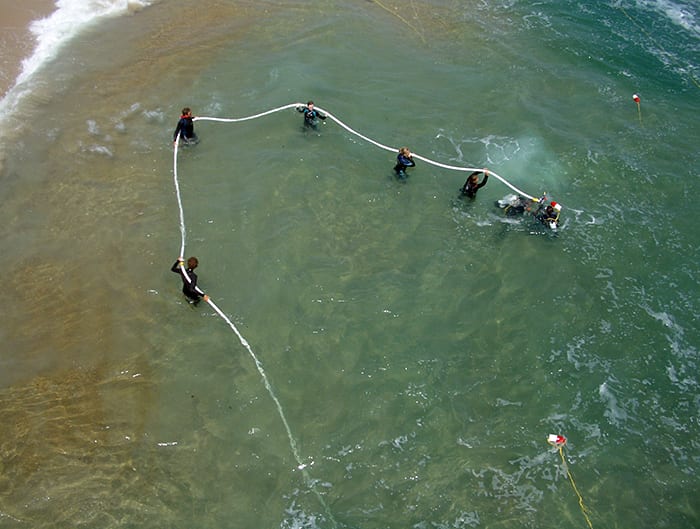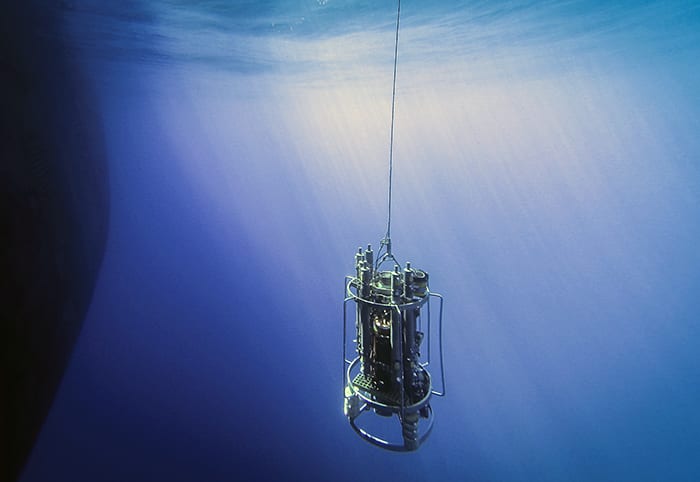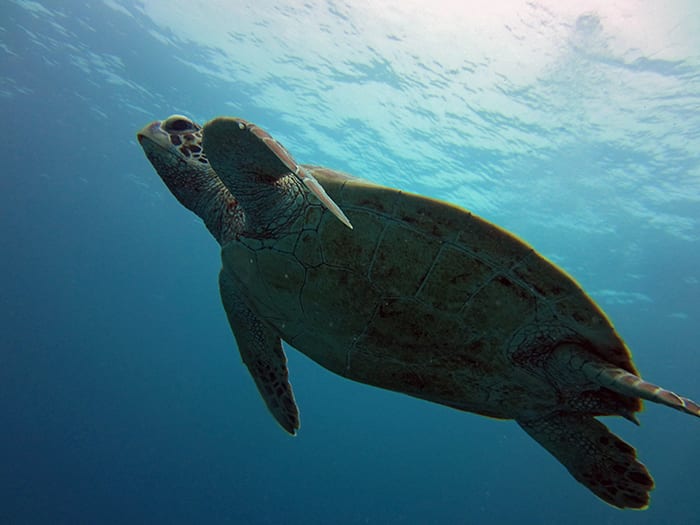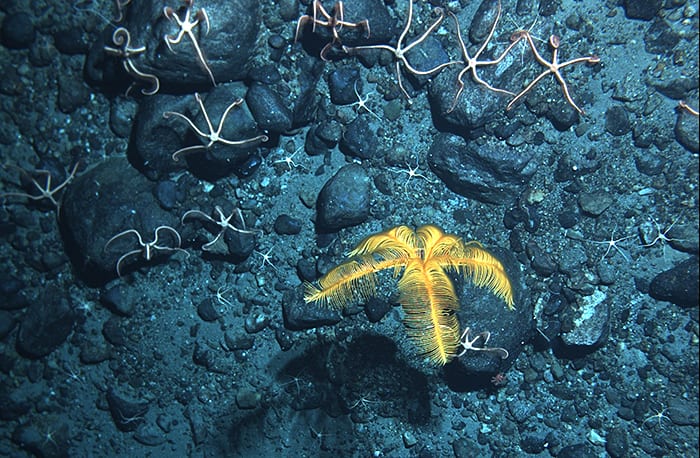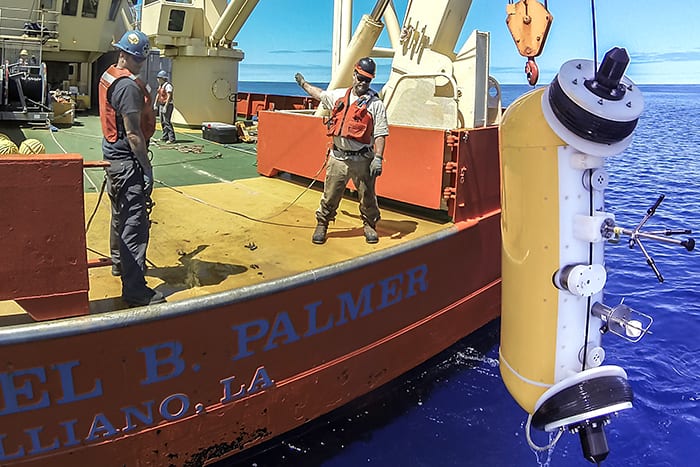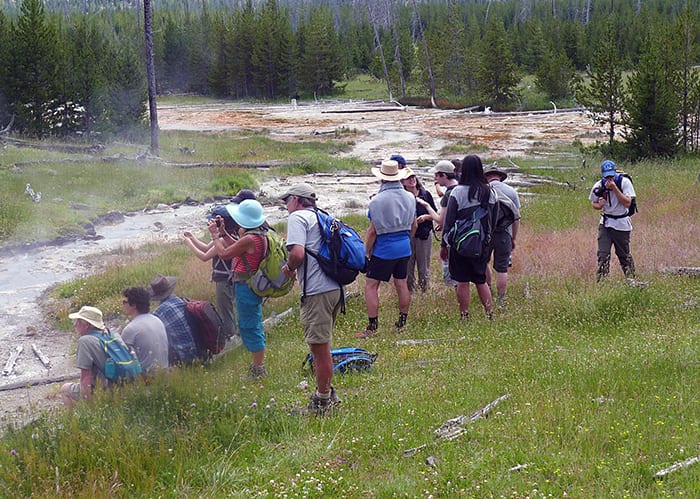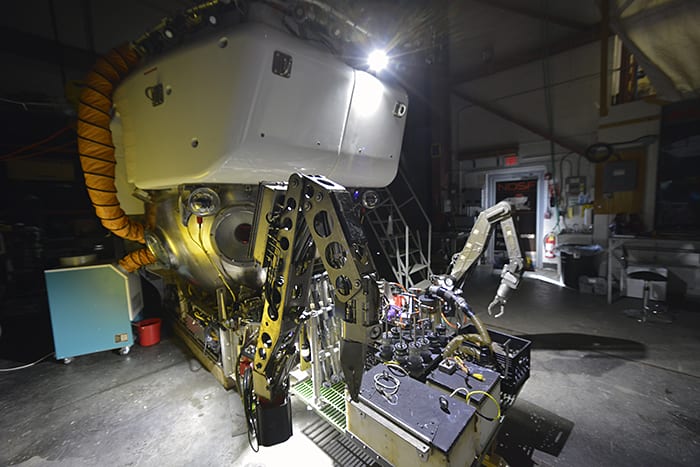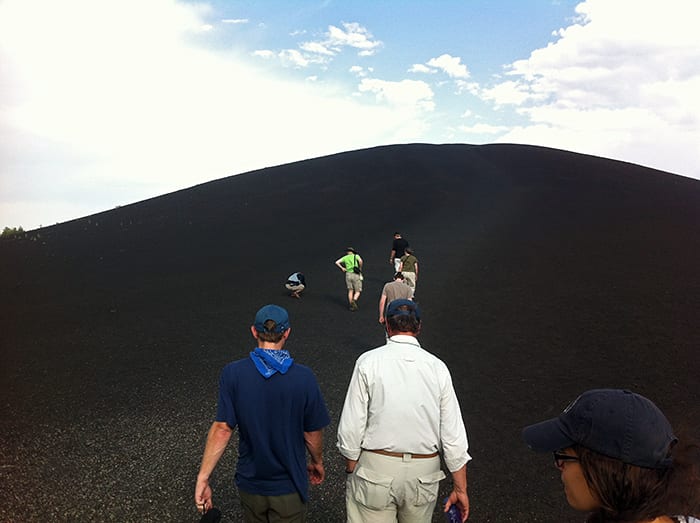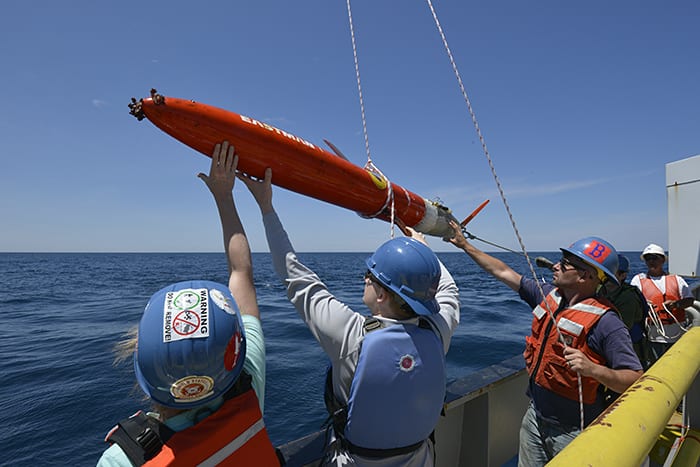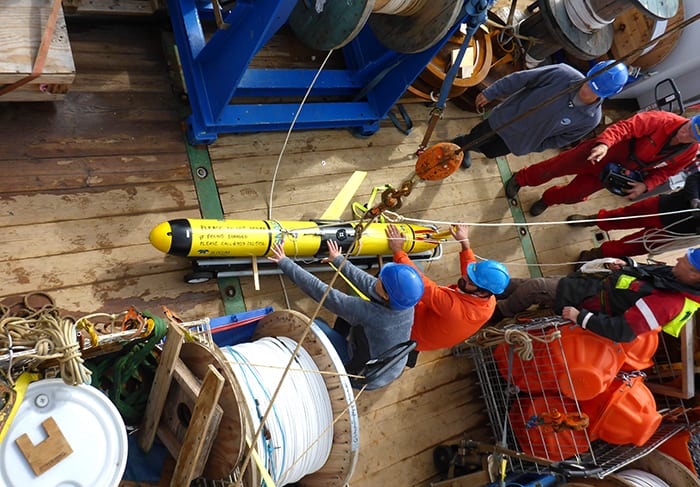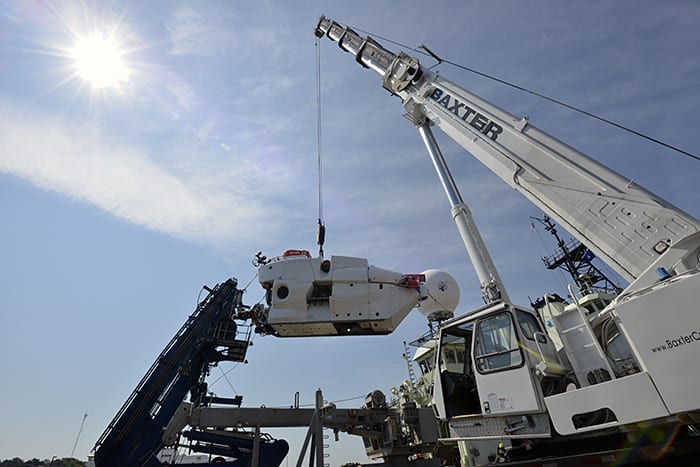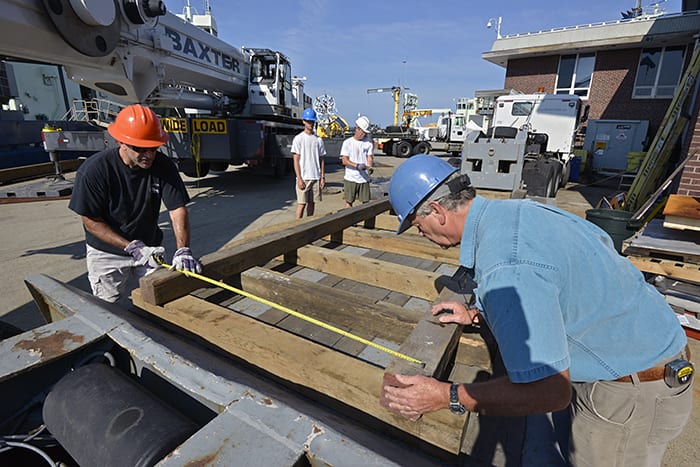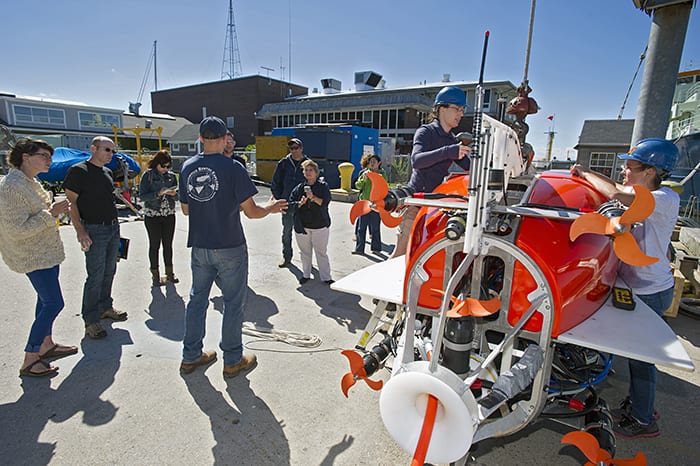Multimedia Items
Rare Sight
McKay’s Bunting is a special sight. Named in honor of American naturalist Charles McKay , these birds summer and breed on a few remote islands in the Bering Sea, and…
Read MoreTesting the Ice
An ice axe is an indispensable tool for navigating on ice. Scientists often use them to probe the snow ahead to see how deep it is, to stop themselves when sliding down…
Read MoreFairy Falls
WHOI students and scientists paused for a group photo before Fairy Falls during a field trip to Yellowstone National Park in Wyoming. The trip culminated the 2015 Geodynamics Program, a…
Read MoreGiving Thanks
At sea, traditions that speak of home and loved ones take on greater meaning. In 1952, Capt. John Pike carved a Thanksgiving turkey in the wardroom aboard R/V Atlantis during a cruise from…
Read MoreDo More on DoMORE
Jian Zhao from the Lamont-Doherty Earth Observatory (LDEO) takes water samples from a CTD (conductivity, temperature, depth) rosette on board the research vessel Nathaniel B. Palmer during a 2015 expedition off…
Read MoreLake Home
Peru’s Lake Titicaca has been home to ancient civilizations for mellennia, including the Incan Empire and, most recently, the Uros, who live on a network of manmade, floating islands and…
Read MoreWelcoming Armstrong
It isn’t often that WHOI or any other research institution welcomes a new research vessel to the fleet. On October 31, R/V Neil Armstrong set out from Anacortes, Wash., where it…
Read MoreBlazing Sunsets
Sunsets come earlier with every passing day this time of year, but the trade-off is that they are often quite beautiful. A recent, blazing sunset framed WHOI’s research vessel Atlantis…
Read MoreNovel Instrument
Invertebrates, such as squid and jellyfish, play a crucial role in the marine food web and are also vital commercial fisheries. Despite their importance, little is known about their natural…
Read MoreCarbon Lock
A jar holds a sample of particles collected at 150 meters depth during a cruise along the West Antarctic Peninsula. These particles—mostly krill fecal pellets and collections of diatoms—are an important component…
Read MoreIn the Path of Piteraqs
The residents of Tasiilaq, the most populous community on Greenland’s eastern coast, are often exposed to the hazards of strong winds known as piteraqs. These torrents of cold air suddenly sweep…
Read MoreGetting Ripped
MIT-WHOI Joint Program student Melissa Moulton and colleagues in the PV Lab at WHOI undertook an study recently to investigate where and how rip currents form on beaches. They used…
Read MoreWhat Goes Down
A scientific instrument called a CTD (conductivity, temperature, depth) is pulled up to the research vessel Nathaniel B. Palmer from deep in the Atlantic Ocean. The 2015 expedition led by…
Read MoreTurtle Sighting
Hanny Rivera, a graduate student in the MIT-WHOI Joint Program, took this photo of a sea turtle on the Great Barrier Reef off Australia. Many sea turtle species are endangered,…
Read MoreGolden Feather
This image of a golden feather star (unstalked crinoid) was taken with an underwater camera system known as Seasled. The Seasled was developed by WHOI scientist Dr. Hanu Singh’s lab…
Read MoreClosing the Loop
The world ocean circulates like a conveyor belt, with cold, salty, dense water in the North Atlantic sinking beneath the surface. But one question remains a mystery: How do these…
Read MoreIn Search of Geysers
WHOI students and scientists investigate Spray Geyser during a field trip to Yellowstone National Park in Wyoming. The trip culminated the 2015 Geodynamics Program, a semester-long series of seminars by…
Read MoreLights, Cameras
Alvin is currently in Woods Hole undergoing maintenance work and so the Deep Submergence Science Committee (DESSC), which acts as an advisory group to the National Deep Submergence Facility operated…
Read MoreLava, Lava Everywhere
WHOI students and scientists ascend the Inferno Cinder Cone during a field trip to a lava field in Craters of the Moon National Monument in central Idaho. The trip culminated…
Read MoreLong-distance Traveller
After a two-and-a-half month journey from Miami, a Spray glider is recovered on the continental shelf southeast of Woods Hole in June 2015. By changing its buoyancy, the glider flies…
Read MoreRobot Reiki
WHOI research specialist Heather Furey and technician Roald van der Heide from the Royal Netherlands Institute for Sea Research prepare a Slocum glider for deployment in the summer of 2015. As part…
Read MoreSub Out of Water
DSV Alvin floats through air instead of water, as it is off-loaded from R/V Atlantis. The country’s deepest-diving human occupied submersible returned to the WHOI dock in July 2015 and…
Read MoreMeasure Twice
Alvin Group leader Bruce Strickrott (left) and WHOI engineer Rod Catanach prepare to offload the human-occupied submersible Alvin from its support ship Atlantis earlier in the year. The trip from ship’s deck…
Read MoreJournalists Dockside
Each September WHOI hosts a group science journalists from around the world in the Ocean Science Journalism (OSJ) Fellowship Program for a week of experience and information about the breadth…
Read More
